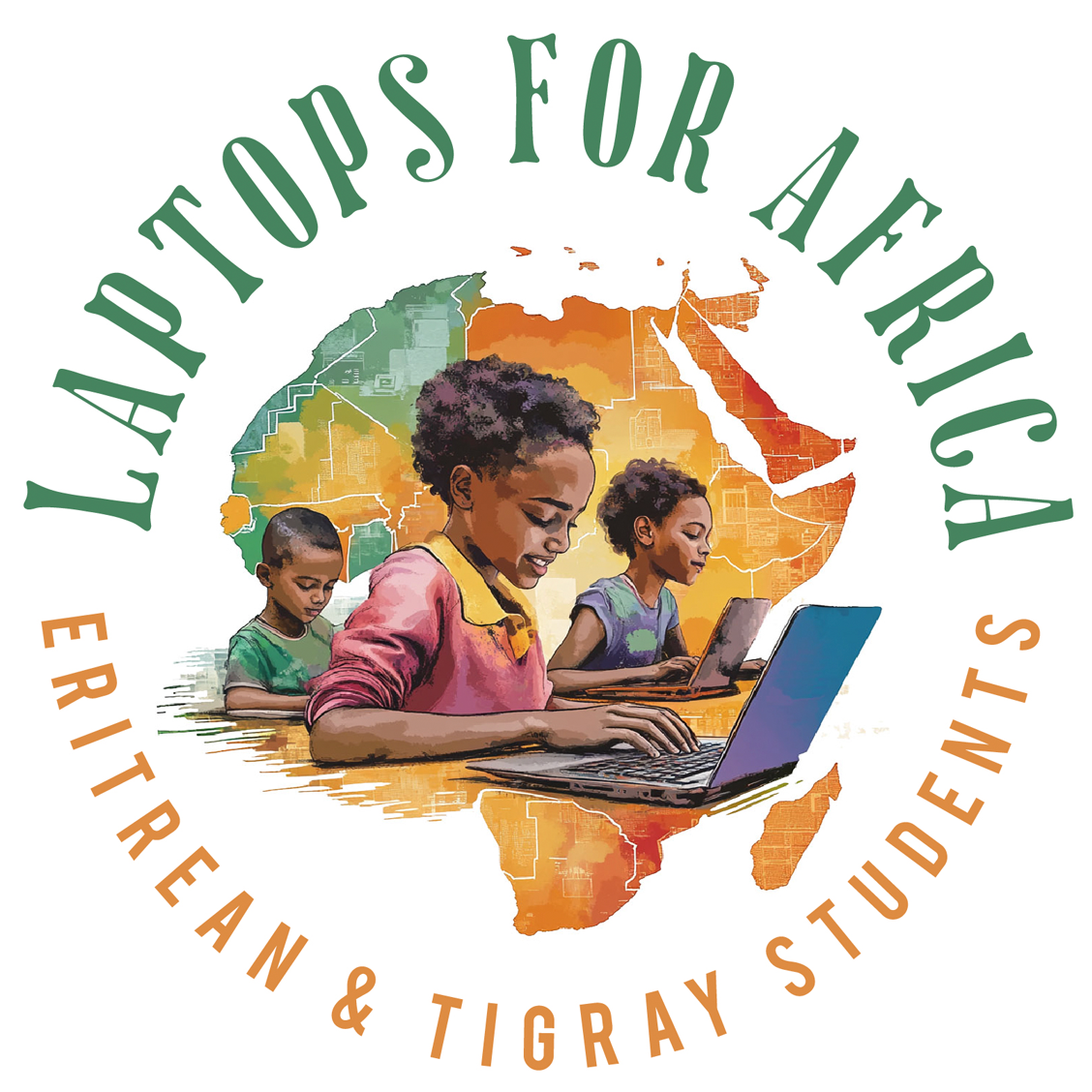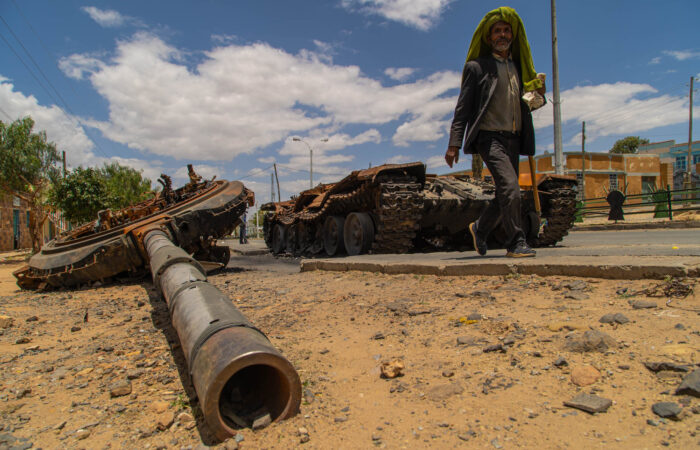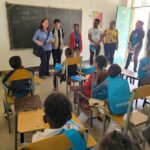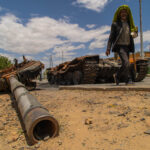Violence. Malnutrition. Displacement. As the situation for children and families in and around Ethiopia’s Tigray region deteriorates, UNICEF issues an urgent appeal for support to ramp up relief efforts.
Shumuye, 10, lives with his family in Yechella, in central Tigray, an area that has seen intense fighting due to conflict in northern Ethiopia. Their house was burned down during the fighting, and they have been staying with extended family.
Shumuye’s father, Barhe Atsma, was taking advantage of a reprieve in armed fighting to farm his land when his son encountered a grenade. It exploded, shattering his leg and killing a friend.

The presence of unexploded ordnance is just one of many threats to Ethiopian kids in Tigray, due to an ongoing crisis that has only escalated since fighting erupted in the region over a year ago. Since then, scores of children have died of starvation, with many more at risk as the civil conflict extends deeper into neighboring regions Afar and Amhara.
Tens of thousands of children caught in Ethiopia conflict are severely malnourished
As access to some of the worst-affected areas increased, UNICEF’s worst fears about the extent of child malnutrition were confirmed, according to agency reports.
Based on screening data from July, UNICEF estimated that 100,000 children were at risk of severe acute malnutrition over the next 12 months — 10 times higher than the country’s average annual caseload. At the end of October, UNICEF reported that 80,000 children under age of 5 were severely malnourished in Tigray, Afar and Amhara.
Nearly half of all pregnant and lactating women were found to be acutely malnourished as well, increasing their risks of pregnancy- and childbirth-related complications. Malnutrition during pregnancy also increases the risk of delivering a low-birth-weight baby prone to sickness and death.

Millions of lives are on the line as conflict — and multiple crises — escalate in Tigray
Malnutrition is just one issue. In its most recent situation report, UNICEF also reports that:
- an estimated 3 million women and children are in need of emergency protection services
- 2.7 million school-aged children are out of school, with 240 schools being used to shelter displaced families and another 2,500 schools completely or partially damaged
- with hundreds of health facilities either damaged or closed and thousands of health workers displaced, millions of people lack access to even basic care; some 855,000 children under age 5 are missing out on routine immunizations
- overcrowding at IDP sites is making poor sanitation and hygiene conditions worse, increasing the risk of cholera and other disease outbreaks
To reach those in need, UNICEF is supporting mobile health and nutrition teams to deliver essential services.

UNICEF is also providing education — both formal and informal — across Ethiopia’s emergency-affected areas. This involves setting up temporary classrooms at IDP camps, reopening schools, providing learning materials and training teachers, among other measures. A total of 177,687 students — 48 percent of them girls — have been reached through these efforts so far.
For UNICEF, education is also a form of protection
Returning children to school, whether in a regular classroom in a school building or in a temporary learning space under a tent, offers many benefits. It helps protect them from physical danger, abuse and exploitation, including recruitment into armed groups. It improves their access to nutrition, safe water, health care and hygiene supplies. And it serves as a source of psychosocial support, by giving them the stability and structure they need to cope with everyday trauma.

Together with partners, UNICEF is also responding to reports of gender-based violence, providing survivors with dignity kits (hygiene supplies), medical care and mental health and psychosocial support services, emergency cash support and legal advice through local referrals facilitated by case managers.
Water, sanitation and hygiene (WASH) is another major focus. UNICEF and partners are reaching hundreds of thousands more people every month with emergency water supplies, either by trucking it to them or repairing or maintaining existing water systems.

More support is needed to help UNICEF ramp up its response in Ethiopia to meet urgent needs. The targets for specific interventions are outlined in UNICEF’s Humanitarian Action for Children (HAC) plan for 2022.
Help UNICEF save and protect vulnerable children in Ethiopia and other countries in crisis. Donate today.

about:blank
TOP PHOTO: A severely malnourished baby receives care at a UNICEF-supported stabilization unit in Ayder hospital in Mekelle, Tigray region, Ethiopia. Ongoing conflict in the region has created widespread food insecurity, sending malnutrition rates among children soaring. ©UNICEF/UN0539193/Leul





